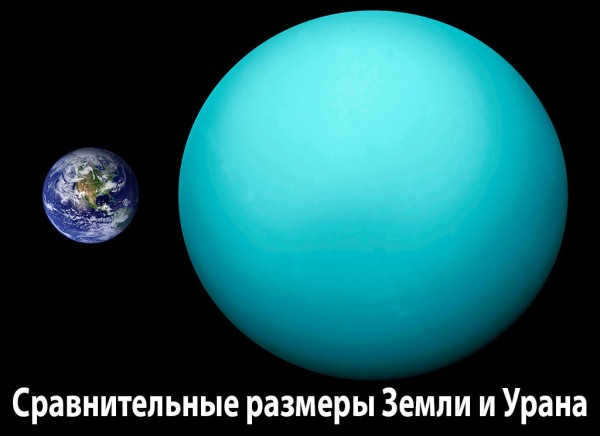The planet Uranus was discovered thanks to Herschel, who used his own telescope to observe the sky.
Discovery history
Before its discovery, Uranus was mistakenly identified as a star. However, the English astronomer noticed a celestial body that moved differently from the stationary stars and had a distinct color. This led to the discovery of a new planet in the late 18th century. The discoverer initially wanted to name it after King George III, but the idea was not successful. Later, the German astronomer Bonet suggested the name Uranus, after the Greek god, which was widely accepted by the public.
Where is it located?
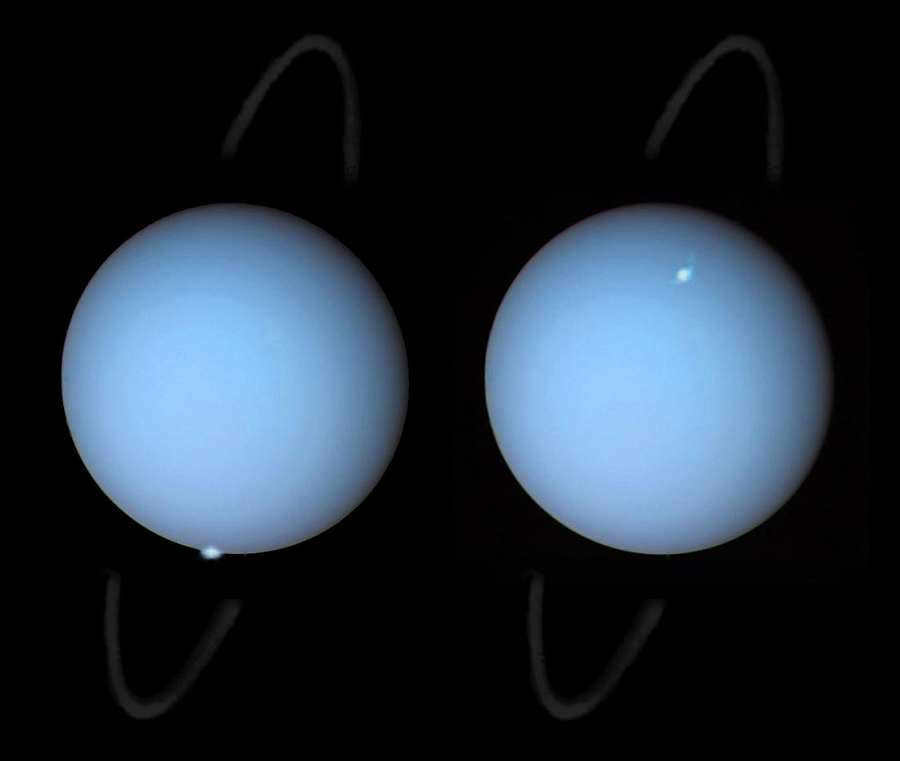

Uranus remained unnoticed for a significant period of time due to its considerable distance from the Sun. Its distance from the Sun is approximately 2.8 billion kilometers, making it the seventh planet in our solar system. Astronomers categorize Uranus as a gas giant. Its immense distance from the source of heat and energy contributes to its status as the coldest planet that has been studied. Surface temperature measurements have recorded record lows, reaching as low as -220 degrees Celsius.
Characteristics of the planet
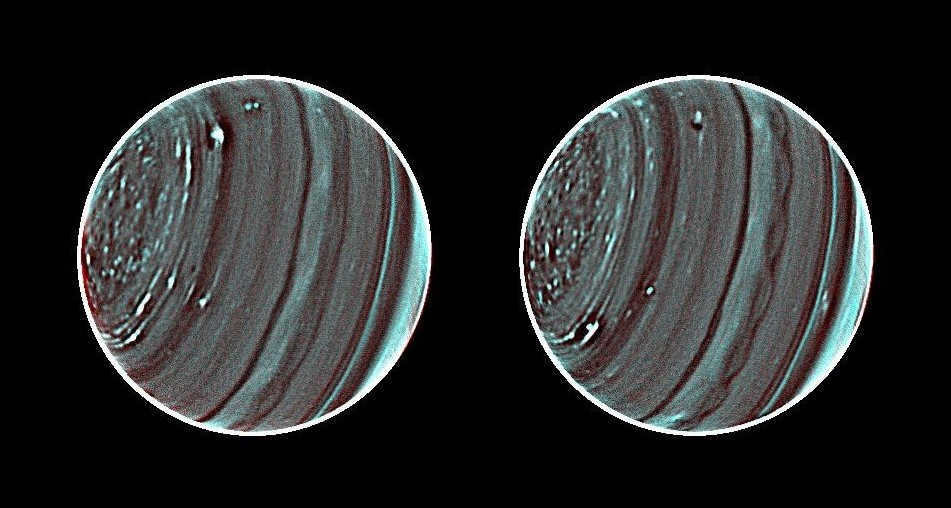

ESO infrared image of Uranus
Uranus possesses a unique position in the solar system, as its axis is inclined at a remarkable 98 degrees. This peculiar tilt causes the planet to orbit on its side, resulting in a truly distinct orbital pattern. Surprisingly, despite this unusual orientation, the equator of Uranus experiences higher temperatures compared to the poles. Additionally, the ice giant rotates in the opposite direction to its orbital motion. It takes Uranus approximately 84 Earth years to complete one revolution around the Sun, while a single day on Uranus lasts approximately 17 hours. However, due to the irregular movement of its gaseous surface, these time frames are only approximate.
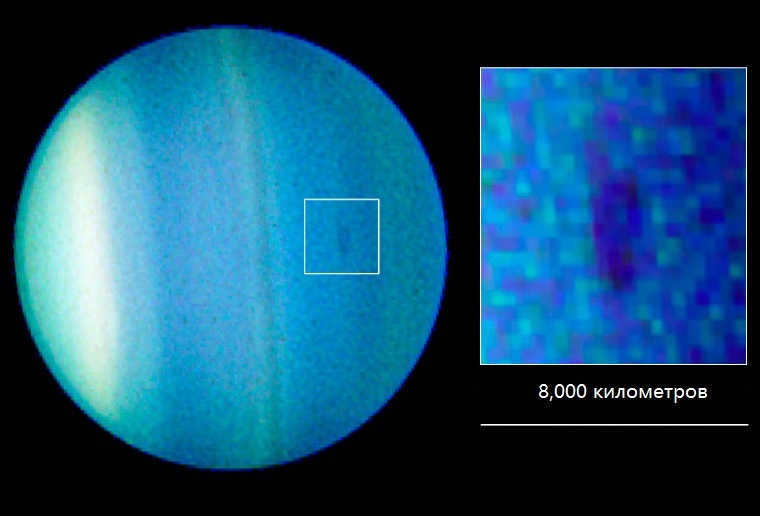
The lower part of the atmosphere is in constant motion and experiences strong winds caused by hurricanes. Just above it lies the tropopause, where clouds made of ammonia and hydrogen sulfide can be found. The seasons on Uranus are quite long, spanning several years, and during this time, one hemisphere of the planet is in darkness without any sunlight. Uranus possesses a strong and intricate magnetic field, which is tilted at an angle of 60 degrees with respect to its rotational axis.
The rings of Uranus
The rings surrounding Uranus are a fascinating feature of the planet. These rings consist of countless particles of ice and dust, which create a beautiful and ethereal appearance. The rings of Uranus are not as well-known or prominent as the rings of Saturn, but they are still a remarkable sight to behold.
Scientists believe that the rings of Uranus may have formed from the remains of moons or other celestial objects that broke apart. They are composed primarily of water ice, with some rocky material mixed in. The rings are arranged in several distinct bands, each with its own unique characteristics.
One of the most intriguing aspects of the rings of Uranus is their unusual orientation. Unlike the rings of Saturn, which lie in the same plane as the planet’s equator, the rings of Uranus are tilted at a steep angle. This tilt is believed to be the result of a collision with a large object in the planet’s past.
The rings of Uranus have been studied extensively by space probes, such as Voyager 2, which flew by the planet in 1986. These missions have provided valuable data and images of the rings, allowing scientists to learn more about their composition and structure.
While the rings of Uranus may not be as famous or well-known as those of Saturn, they are still a fascinating and beautiful feature of this distant planet. As our understanding of the rings continues to grow, we will undoubtedly uncover more secrets about their formation and evolution.
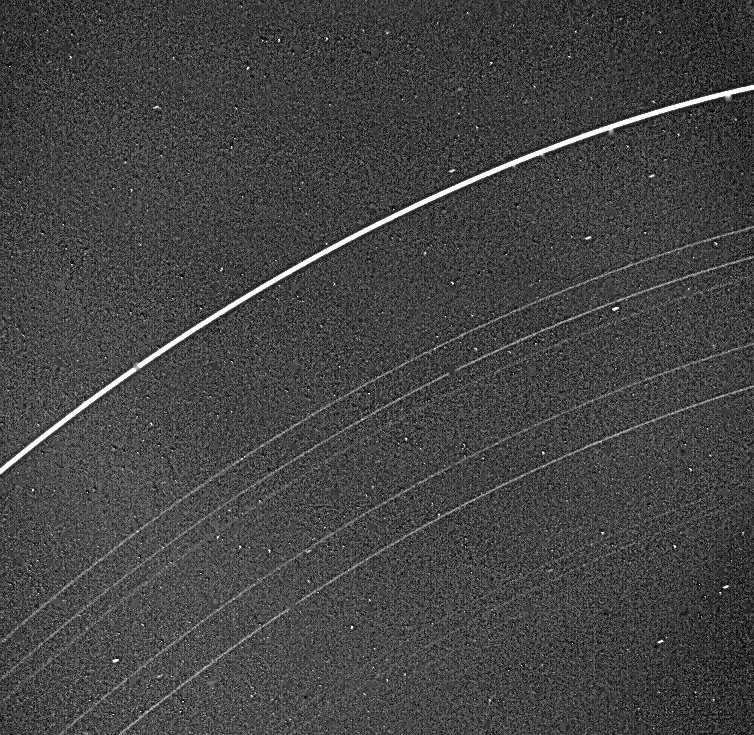

Uranus is encompassed by a unique arrangement of rings, comprising of particles of various sizes. These rings possess a dark hue, making them inconspicuous and difficult to perceive. It was not until 1977 that they were first observed. There exist a total of 13 rings – 11 inner rings and 2 outer rings, which exhibit a vibrant spectrum of colors.
Artificial Satellites
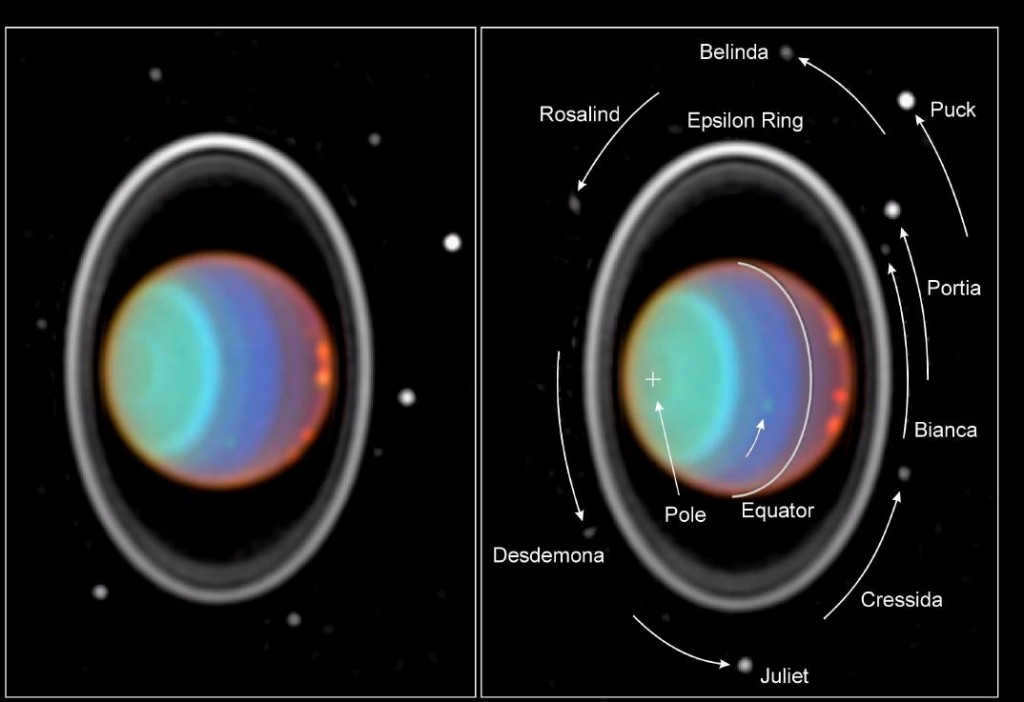

Image of Uranus, one of the planets in order from the Sun
The primary characteristics of the planet
Mass: 86,832 x 10*24 kg
Volume: 6833 x 10*10 km3
Average radius: 25362 km
Average diameter: 50724 km
Average density: 1.270 g/cm 3
First space velocity: 21.3 km/s.
Free-fall acceleration: 8.87 m/s 2
Natural satellites: 27
Presence of rings – yes
Major semi-axis: 2872460000 km
Orbital period: 30685.4 days
Perihelion: 2741300000 km
Aphelion: 3003620000 km
Average orbital velocity: 6.81 km/sec.
Orbital inclination: 0.772°
Orbital eccentricity: 0.0457
Stellar rotation period: 17.24 hours
Day length: 17.24 hours
Axial inclination: 97.77°
Date of discovery: March 13, 1781
Minimum distance from Earth: 2581900000 km
Maximum distance from Earth: 3157300000 km
Maximum visible diameter from Earth: 4.1 arc seconds.
Minimum visible diameter from Earth: 3.3 arc seconds
Maximum stellar magnitude: 5.32
Uranus is one of the most distant celestial bodies in our solar system from the Sun. It occupies the seventh position among the planets and its orbit is located between the orbits of Saturn and Neptune. Are there any intriguing characteristics associated with Uranus?
Ancient Greek moniker
In the realm of planetary nomenclature, all the planets are typically designated after Roman gods. However, there is a singular exception in the case of Uranus. Its name is derived from Greek mythology rather than Roman mythology. Johann Bode suggested assigning the planet the name of Saturn’s father since Saturn (the sixth planet) was the progenitor of Jupiter (the fifth planet), who in turn was the sire of Mars (the fourth planet). Yet, it was discovered that Saturn did not have a father in the Roman pantheon! Nevertheless, the Greek equivalent of Saturn, the titan Kronos, did have a father, Uranus. Hence, the seventh celestial body in our solar system is called Uranus.
It is worth noting that the person who first identified Uranus, Herschel, bestowed upon it the moniker “George’s Star” as a tribute to the monarch of England. It wasn’t until 1823 that the name Uranus was officially employed in scientific literature. It took until 1850 for the English to forsake the designation “George’s Star” and adopt the name of the Greek deity from ancient mythology.
The initial planet found by astronomers
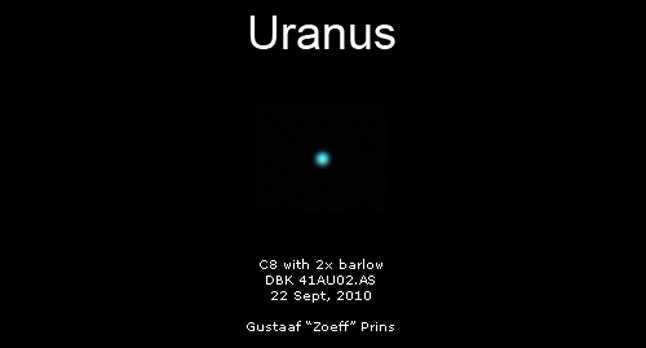
Throughout ancient history, the knowledge of the initial six planets in the solar system (ranging from Mercury to Saturn) has been widely known, making it challenging to attribute their discovery to a single individual. For countless millennia, scientists around the globe firmly believed that the limits of the solar system extended as far as the orbit of Saturn.
The initial sighting of Uranus goes back to 1690, but it was mistakenly identified as a star by the Englishman John Flemsteed. In 1781, William Herschel made the groundbreaking discovery that Uranus was actually moving across the sky, ruling out the possibility of it being a star. Initially, Herschel believed he was observing a comet, but it wasn’t until 2 years later that he correctly identified it as the new seventh planet of our solar system. This marked a significant expansion of our understanding of the planetary system, as Uranus became the first planet to be discovered through the use of a telescope. Interestingly, Uranus can also be seen with the naked eye, although its visibility is at the limits of human visual perception.
The frigid planet
While Neptune is situated much farther from the Sun compared to Uranus, it is Uranus that claims the title of the coldest planet. On this celestial body, temperatures can plummet as low as -224°C! But why is Uranus colder than Neptune? The reason lies in the interplay between the heat received from the star and the internal heat generated within the planet itself. Mysteriously, the core of Neptune emits a significant amount of heat – 1.5 times more than what the planet receives from the Sun. Conversely, Uranus possesses minimal internal heat, resulting in a greater cooling effect than its neighboring planet, Neptune.
Due to the relatively low heat production of its core, the weather on Uranus remains relatively calm. When the Voyager 2 probe initially approached Uranus and captured close-up images, it revealed a lack of storms or clouds typically seen on other gas giants. However, in 2004, there was a significant increase in atmospheric activity, resulting in winds reaching speeds of up to 230 meters per second.
The weather patterns on Uranus are heavily influenced by the planet’s unusual tilt. As a result, the poles receive more heat than the equator, leading to drastic temperature fluctuations during seasonal changes. These climate variations even affect the brightness of Uranus in the night sky.
Resting on its flank
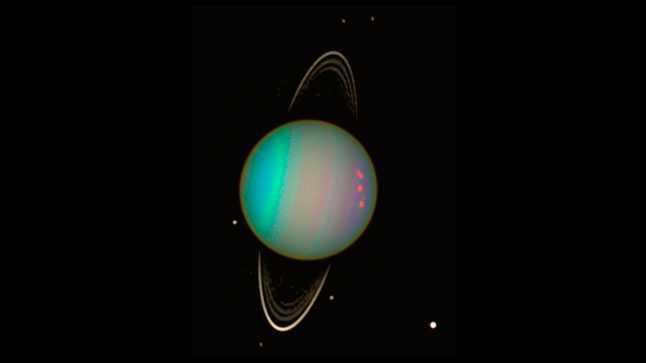
Unlike most planets, Uranus has a unique axis of rotation that is nearly parallel to its orbital plane. Specifically, the angle of Uranus’ axis is 97.77°. This distinct characteristic results in minimal seasonal variations on the planet!
Generally speaking, due to the unusual inclination, nearly the entirety of Uranus’ surface (excluding a narrow band at the equator) experiences either “polar day” or “polar night”. As the length of a “Uranian year” is 84 Earth years, the polar night and polar day at the poles lasts for 42 years. In other words, on the majority of the planet, daylight transitions to darkness every 42 years.
Once Uranus was identified as the seventh celestial body in 1783, astronomers immediately began observing it closely and analyzing its path. To their surprise, they found that it deviated from its expected trajectory under the influence of the Sun’s gravity and the gravitational pull of other planets. The first person to notice these irregularities in Uranus’ movement was Andrei Lexel, a Russian astronomer. He was also the first to propose that these anomalies were caused by the gravitational force of a planet positioned even farther from the Sun.
It wasn’t until the 1840s that scientists, armed with real data on Uranus’ orbit, were able to calculate the probable location of this hypothetical eighth planet. Finally, in 1846, the calculations were proven correct with the discovery of Neptune. This newly found planet was given the name Neptune.
At one time, Uranus held the title of being the most distant planet in our solar system.
However, new evidence suggests that the positioning of Uranus may have been different in the past. According to calculations, when the Solar System first formed, Uranus had a larger orbit radius than Neptune. This all changed 600 million years after the Sun’s formation when Saturn and Jupiter entered into an orbital resonance, causing them to collectively influence Neptune and push it away from the solar system. As a result, Neptune surpassed Uranus and the two planets essentially “switched places”.
There are no big moons orbiting Uranus
Typically, massive planets have numerous moons, some of which are quite sizable. At present, there have been identified 27 moons revolving around Uranus. However, the largest among them, called Titania, has a diameter of merely 788 kilometers. This measurement is slightly more than half the size of Earth’s sole moon, known as the Moon.
The rings of Uranus: a unique feature of the planet
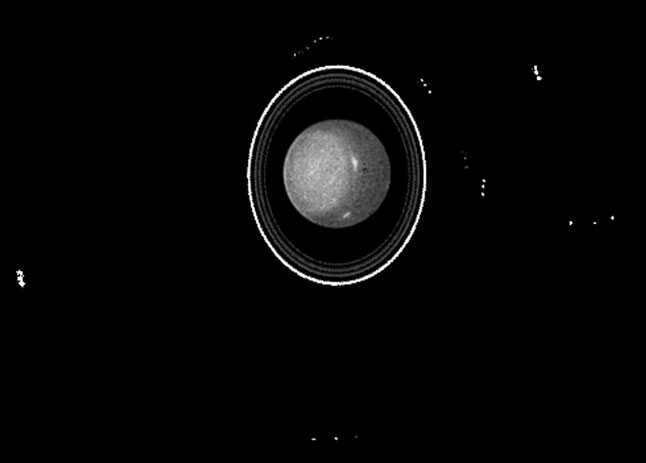
It has been discovered that all the other giant planets, including Uranus, also have rings, not just Saturn. Back in 1789, Herschel, who was the one who discovered Uranus, claimed to have seen rings around it, but other astronomers did not confirm this observation. It was believed that Herschel had made a mistake. However, it wasn’t until 1977, two centuries later, that it was finally confirmed that he was correct.
Currently, Uranus is known to have 13 rings. What sets these rings apart is their remarkable darkness. They reflect only 2% of the light that reaches them, making them even darker than coal. It is believed that these rings formed relatively recently, about 600 million years ago, possibly as a result of the destruction of a satellite that was orbiting Uranus.
Uranus remains a mystery
Uranus, being situated at such a great distance from Earth, poses significant challenges when it comes to comprehensive study. Throughout history, only one spacecraft, Voyager 2, has had the opportunity to closely observe this enigmatic planet. Back in 1986, Voyager 2 managed to approach Uranus within a mere 81,500 kilometers. Interestingly, just three years later, the same probe got as close as 4.4 thousand kilometers to Neptune. This comparison reveals that Uranus remains the least explored planet in our solar system. Presently, astronomers rely solely on telescopes to gather information about Uranus, as there are no upcoming space missions planned for the next decade.
Related Articles
List of references used
– https://top10a.ru/interesnye-fakty-o-planete-uran.html#5_1783
– https://zen.yandex.ru/media/id/5d38a34dddfef600b01e7466/10-faktov-pro-uran-5db0a4e3e6e8ef00b18f4a6e
– https://ru.wikipedia.org/wiki/Уран_(planet)
The planet farthest from the Sun is followed by Neptune, Uranus, Saturn, Jupiter, Mars, Earth, Venus, and Mercury.
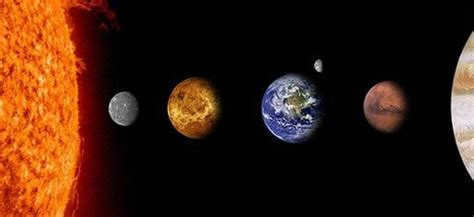
Table of Contents:
- How many planets are there in the solar system, 8 or 9?
- What is the coldest planet in the world?
- What are the names of the 8 planets?
- What is the largest planet in the world?
- Which planet corresponds to the number 9?
- What is the most dangerous planet in the world?
- Which planet will float?
Are there 8 or 9 planets in the solar system?
The solar system is composed of eight planets: Mercury, Venus, Earth, Mars, Jupiter, Saturn, Uranus, and Neptune.
Based on the MAC definition, there are currently 8 confirmed planets in our solar system: Mercury, Venus, Earth, Mars, Jupiter, Saturn, Uranus, and Neptune.
How many planets are there in total?
| Number of confirmed planets | 8 |
| Number of dwarf planets | 5 |
| Number of satellites | 639 (204 for planets and 435 for small solar system bodies) |
| Number of small bodies | More than 1,000,000 (as of November 2020) |
What is the count for planet Earth?
Mercury is the first planet, Venus is the second planet, Earth is the third planet, and Mars is the fourth planet. The fifth planet is Jupiter, the sixth planet is Saturn, and the seventh planet is Uranus, followed by Neptune.
Which planet has the highest temperature?
Venus has an average surface temperature of 735 K (462 °C), making it the hottest planet in the solar system, despite the fact that Mercury is closer to the Sun.
What is the most frigid planet in the universe?
In terms of coldness, Uranus takes the crown as the chilliest planet in our solar system. Despite being 1.7 billion kilometers closer to the Sun than its counterpart, Uranus boasts a bone-chilling minimum temperature of minus 224 °C.
The existence of the ninth planet remains speculative, as it is postulated to reside in the far reaches of our Solar System. This hypothetical celestial body’s gravitational pull could potentially account for the peculiar distribution patterns observed among detached transneptunian objects (TNOs) predominantly found in the scattered disk beyond the Kuiper belt.
According to the International Astronomical Union’s classification, our Solar System is home to a total of 8 planets. In order of their proximity to the Sun, we have four terrestrial planets: Mercury, Venus, Earth, and Mars, followed by four gas giants: Jupiter, Saturn, Uranus, and Neptune.
So, what exactly is Saturn? Well, it happens to be the sixth planet in our solar system. Unlike Earth, Saturn is a gas giant, which means it lacks a solid surface. Instead, its composition is primarily made up of hydrogen and helium, making it quite unique among the other planets.
What are the names of the eight planets?
Within our solar system, there are a total of nine large planets. Starting from the closest to the Sun, they are Mercury, Venus, Earth, Mars, Jupiter, Saturn, Uranus, Neptune, and Pluto. Additionally, there are numerous asteroids that can be considered as small planets.
What is the biggest celestial body in the universe?
Jupiter, the largest celestial body in the solar system, is set to align with the Sun on June 10. An alignment occurs when a celestial body is positioned on a line that connects the Earth and the Sun, with the Earth situated between the body and the Sun.
Johannes Kepler (1571-1630), a renowned German astronomer, made groundbreaking discoveries regarding the planetary motion within the solar system. Throughout his lifetime, Kepler dedicated himself to the validation and advancement of Copernicus’ heliocentric theory.
Our planet, Earth, is the third celestial body from the Sun. While many perceive Earth as a spherical object, it actually possesses the shape of a flattened sphere, specifically a geoid. Over seventy percent of Earth’s surface is covered by water.
Which celestial body holds the title of the smallest in the universe?
Is the Moon considered a planet?
No, the Moon is not officially classified as a planet, even though it shares many characteristics with planets.
What is the name of the 9th planet in our solar system?
| This is an artist’s depiction of the 9th planet. The orbit of Neptune is shown near the Sun | |
| Alternate names | Planet 9. |
| Discovery | |
| Discoverer | None |
Which planet is associated with the number 9?
Astrologers claim that Saturn is the celestial body that influences our value system, instills confidence in individuals, and aids in the fulfillment of our dreams. This planet is closely tied to the numeral 9 as it assists in completing significant tasks, highlights our errors, and prevents us from becoming disheartened during challenging times.
Which planet is the most hazardous in the universe?
| Perihelion | 1,353,572,956 km 9.048 a. e. |
| Aphelion | 1,513,325,783 km 10.116 a. e. |
| Major semi-axis (a) | 1,429,394,069 ± 0 km and 1,426,666,414 179.9 m |
| Orbital eccentricity ( e) | 0,055723219 |
Which planet is the most iron-rich?
Mercury is the closest approximation to this kind of planet in our solar system.
Which planet is primarily composed of water?
A newly discovered planet has been dubbed “Waterworld.” It is twice the size of Earth and has a mass seven times lighter. The planet is located 124 light years away from Earth. Scientists have found that when the water on this planet is exposed to high temperatures, it transforms into hot ice.
Which planet could easily float in water?
Saturn is the sole planet within our solar system that possesses a density lower than that of water. Consequently, if we were to discover an ocean of sufficient size, Saturn would effortlessly float upon it. Saturn’s radius is approximately nine times greater than that of Earth.
Which planets experience the highest temperatures?
Surprisingly, Venus is the planet with the highest temperatures in the entire solar system, surpassing even Mercury, which is situated closer to the Sun. Venus maintains an average surface temperature of 460ºC, primarily due to its extensive greenhouse effect that permeates the entire planet.
Video: Identifying the Earth among the 8 planets
Did our responses assist you?
Trending today

When is the ideal day for Scorpio?
Scorpios experience peak efficiency on Tuesday, while Monday and Friday are reserved for rest and relaxation. Page.

In the ancient civilization of Egypt, there existed specialized institutions known as “houses of life” that were closely associated with temples. These establishments served as educational centers for exceptionally talented students.

The term “paternal house” refers to the place where one’s father lives.

Why is there no fifth group in the House?
In the book, there is a leader named Pompey who belongs to the sixth group of Dogs. However, the fifth group is mysteriously missing.

Which house retains heat for a longer period of time?
As can be observed, the frame house is the least demanding in terms of insulation. Nevertheless, it performs well in a warm climate.

What is the process of falling in love for Venus in Capricorn?
How does Venus in Capricorn experience the journey of love? Individuals with this placement tend to slowly unveil their emotions, as their feelings simmer beneath the surface for an extended period of time.

What are the preferences of Venus in Capricorn?
Venus in Capricorn showcases a range of positive qualities such as impeccable etiquette and the skill of staying committed.


What kind of clothing do Scorpios typically opt for?
Scorpios tend to favor tight-fitting dresses and pants, short skirts, and plunging necklines.

According to Western astrology, Scorpio is the zodiac sign that the Sun enters around October 23.

What is the reason for delving into the study of astrology?
The field of astrology offers the opportunity to make better-informed choices and provides insights into pivotal moments.
Uranus (referred to as Uranus in Portugal) stands as the seventh celestial body from our Sun, ranking as the third largest and fourth most massive planet among the eight that comprise our solar system. This planet derives its name from the Greek deity Uranus, who serves as the father of Saturn (Cronus) and the grandfather of Jupiter (Zeus).
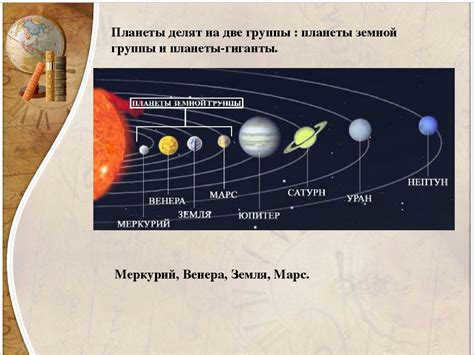
Table of Contents
- Which planet is the 7th in Scorpio?
- How many planets are there in total in space?
- What was the name given to the 10th planet?
- Which planet is 318 times bigger?
- What is the biggest planet in space?
What is the 7th planet in the solar system?
Uranus (also known as Uranus in Portuguese) is the seventh planet from the Sun in our Solar System. It is the third largest and fourth most massive planet out of the eight planets. The name Uranus comes from the Greek sky deity Uranus, who is the father of Saturn (known as Cronus) and the grandfather of Jupiter (known as Zeus).
Which planet is the 7th in the solar system?
Uranus is the seventh planet in our solar system and it is also the coldest. The temperatures on Uranus can drop as low as -224 degrees Celsius. It is smaller than the gas giants Jupiter and Saturn, but still four times larger and almost 15 times heavier than Earth.
The solar system consists of only 8 planets. The planets that orbit around the Sun are: Mercury, Venus, Earth, Mars (known as the terrestrial group planets); Jupiter, Saturn, Uranus, Neptune (known as the giant planets).
Based on this definition, the Solar System is composed of eight known planets: Mercury, Venus, Earth, Mars, Jupiter, Saturn, Uranus, and Neptune.
There is a hypothetical ninth planet in the outer region of the solar system. It is believed that the gravitational pull of this planet could explain the unusual distribution of detached transneptunian objects (TNOs) that are mostly found outside the Kuiper belt in the scattered disk.
Currently, there are still eight planets in the solar system. However, on August 24, Pluto was reclassified as a dwarf planet. This decision was met with disagreement from astrologers, who referred to it as a “universal injustice”. The universally recognized planets now include: solid planets – Mercury, Venus, Earth, and Mars; gas giants – Saturn, Jupiter, Uranus, and Neptune.
How many planets are there in space?
In space, there are a total of eight planets. These planets, in order of their proximity to the Sun, are Mercury, Venus, Earth, Mars, Jupiter, Saturn, Uranus, and Neptune. Additionally, there are also several dwarf planets including Ceres, Pluto, Haumea, Makemake, and Erid. It is possible that in the future, more celestial objects such as Sedna and others may be classified as dwarf planets.
According to the International Astronomical Union, the solar system consists of eight planets. These planets are Mercury, Venus, Earth, Mars, Jupiter, Saturn, Uranus, and Neptune. They are divided into two categories based on their size and composition. The four inner planets, which are similar to Earth, are Mercury, Venus, Earth, and Mars. The four outer planets, known as the giant planets, are Jupiter, Saturn, Uranus, and Neptune.
In our solar system, there are a total of 9 large planets. Starting from the closest to the Sun, we have Mercury, Venus, Earth, Mars, Jupiter, Saturn, Uranus, Neptune, and Pluto. Additionally, there are numerous asteroids that can be considered as small planets.
Do you know the name of the 10th planet?
The 10th planet, which is purely hypothetical, was named Phaeton. This name was given in reference to an ancient myth. According to the myth, Phaeton was the son of the god Helios and the sea goddess Thetis. The debris from this hypothetical planet is believed to have formed the asteroid belt. The term “Phaeton” was popularized by the Russian astronomer Sergei Orlov.
Why isn’t Pluto considered a planet anymore? The main reason for this change in classification is that Pluto failed to clear the space around its orbit from other objects. As a result, it was reclassified as a dwarf planet, belonging to a new category of celestial bodies.
How big is a planet exactly?
What planet is 760 times bigger than Earth?
When it comes to Saturn, this gas giant is primarily composed of hydrogen and helium. Its vast size enables it to accommodate 760 planets similar in size to Earth, and its mass is 95 times greater than Earth’s. Furthermore, Saturn possesses the lowest density.
Located as the sixth furthest planet from the Sun, Saturn is the second largest celestial body in our Solar System, following Jupiter. Scientifically categorized as a gas giant planet, Saturn boasts impressive dimensions.
Which planet is 318 times larger?
Jupiter, the largest planet in the solar system, has a mass that is 318 times greater than that of Earth. Many planets have satellites that are held close to them by gravitational forces. Our Earth has a satellite called the Moon, which is the closest celestial body to us. The average distance between the Moon and Earth is 380,000 kilometers.
What is the name of the 11th planet?
Hygeia, which is named after the ancient Greek goddess of health, is located in the main asteroid belt between the orbits of Mars and Jupiter. This dwarf planet has a diameter of approximately 430 km, which is slightly more than the distance from the center of Moscow to Nizhny Novgorod.
Jupiter is the fifth planet from the Sun. It is located between Mercury, Venus, Earth, and Mars.
So which planet is Saturn? It’s the sixth planet in our solar system. Saturn is classified as a gas giant, meaning it does not have a solid surface. Instead, its atmosphere is primarily composed of hydrogen and helium.
When looking up at the sky, we can see a total of six planets with the naked eye: Mercury, Venus, Mars, Jupiter, Saturn, and occasionally Uranus.
Why was one planet reclassified?
The decision to strip Pluto of its planet status came after the discovery of several celestial bodies that were similar in size, such as Ceres and Erida. However, Ceres and Erida did not possess all the characteristics of a true planet, like the ability to clear their orbit of other celestial bodies. As a result, they were classified as dwarf planets.
Which planet is the hottest?
Venus holds the title for the hottest planet in our solar system, with an average surface temperature of 735 K (462 °C). This is despite Mercury being closer to the Sun.
What planet is considered to be the most stunning in the entire universe?
Saturn is widely regarded as one of the most breathtaking and renowned celestial bodies within the solar system.
Which planet holds the title for being the most frigid in existence?
However, Uranus, positioned 1.7 billion kilometers closer to the Sun, claims the distinction of being the coldest planet in our Solar System. With a minimum temperature of minus 224 °C, Uranus truly lives up to its icy reputation.
Which planet is the biggest in the universe?
Jupiter, the largest giant planet, cannot compare in size to the exoplanet WASP-17 b. This celestial body is situated in the Scorpius constellation, approximately 1,307 light-years away from our planet. WASP-17 b has a diameter twice that of Jupiter and currently holds the title of being the largest planet in the entire universe.
Did our answers provide assistance?
Trending today

What does the concept of happiness entail?
Therefore, each individual invests something unique into the concept of happiness, which brings them a sense of fulfillment.

How can one provide an explanation for the concept of happiness?
– The state of happiness is attained when all of one’s objectives have been met, desires and aspirations have been fulfilled, and when one is engrossed in love.

Can one acquire the knowledge of how to experience happiness?
Achieving a constant state of happiness might be unattainable, as there are instances of sorrow and hopelessness in the lives of every individual, and this is an inevitable reality.

What is genuine happiness?
Happiness is a mental state. It is a blissful state that stems from living a virtuous life. Life.

What are the words that can capture the essence of happiness?
A moment of pure bliss, a sense of complete fulfillment and elation that fills one’s being.

What is the definition of happiness?
– Happiness can be described as the state of achieving all of one’s goals, having one’s desires and dreams fulfilled, and being engaged in love.

How would I describe happiness?
Happiness can be defined as a state of being where one experiences a profound sense of joy and contentment with life. It is a subjective feeling that varies from person to person, and can be influenced by various factors such as personal values, goals, and circumstances.

What constitutes happiness within a family?
A contented family is a harmonious and thriving union of individuals, whose relationships are built on mutual understanding and support.

What defines a joyful family?
A joyful family is a family that is characterized by love and a sense of understanding. Every member experiences a sense of warmth.

What are some factors that can prevent a marriage from taking place?
One possible obstacle is if one or both individuals are already married to someone else. Another obstacle can arise if the couple is closely related to each other, as there may be a prohibited degree of consanguinity. Additionally, if either party has been adopted, this could also present an obstacle to marriage.
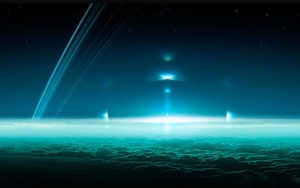
Uranus, the seventh planet in our solar system, is situated approximately 2.8 billion kilometers away from the Sun. This gas giant has an equatorial radius measuring 26.6 thousand kilometers and a mass that is 14.6 times greater than that of Earth. Uranus orbits the Sun in an almost perfect circle, reaching speeds of 6.8 km/sec. The planet’s density is 4.4 times lower than that of Earth. Uranus takes 17 hours to complete one revolution on its axis, although areas further from the equator take 14 hours to complete a full rotation. These variations in rotational speed indicate that the planet’s gaseous surface is not uniform but rather follows its own set of rules, forming a chaotic mass.
Organization
Atmosphere
The upper layers of the atmosphere are characterized by the presence of minuscule methane crystals, which contribute to the planet’s distinct greenish hue. The lower layers, on the other hand, are predominantly composed of liquid hydrogen (83%) and helium (15%). Below the atmospheric layers lies a remarkably dense mantle comprising a mixture of ammonia and water in liquid form.

The central part
The existence of a solid core in Uranus is still uncertain, although the prevailing view among scientists is that it does exist. It is believed to be composed of silicon and various metallic elements.
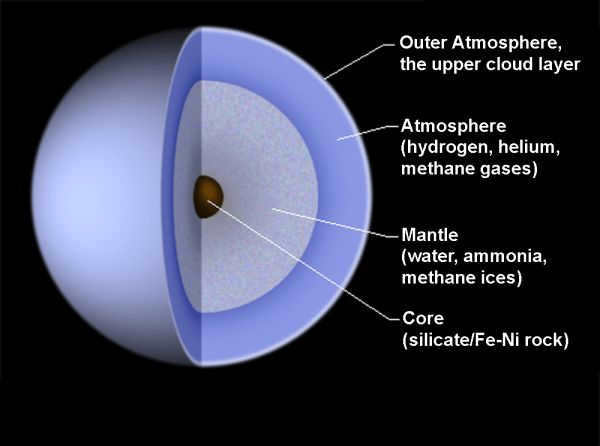

The Rings of Uranus
Uranus is known for its 13 rings, although they are not as prominent or colorful as the magnificent rings of Saturn. In fact, Uranus’ rings are quite dark in color, making them almost invisible to the naked eye. These rings were first discovered in 1977 through circumstantial evidence – astronomers noticed that they caused a slight dimming of the light from the stars they passed in front of.
While all of Uranus’ rings are composed of stony particles, they are not uniform in appearance. The innermost 11 rings are nearly black, while the outermost rings have a blue color. The widest ring, located on the outer edge, is an impressive 96 kilometers in width, while the others range from 1 to 10 kilometers. Despite their relatively small size and lack of visibility, Uranus’ rings are a fascinating feature of this distant planet.
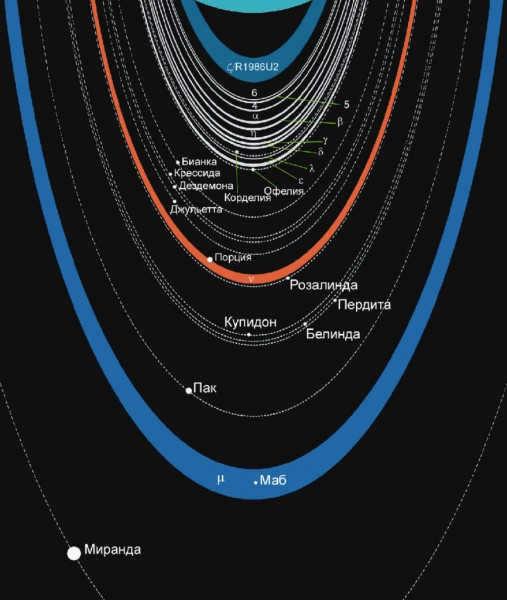
Schematic representation of the rings surrounding Uranus.
Satellites
Uranus has a total of 27 satellites, with 5 being considered the primary ones. These satellites are composed of a mixture of ice (containing ammonia, carbon dioxide, and methane) and rocks. They orbit around Uranus, with one side always facing the planet, similar to our Moon.
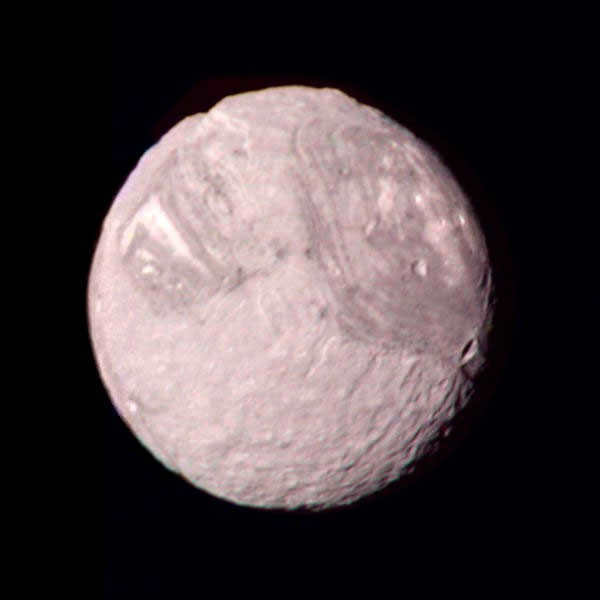
With a density lower than that of Uranus, Miranda is the smallest among the main satellites. It orbits the planet at a distance of approximately 130,000 km and has a diameter of 472 km. It completes one orbit around Uranus in 1.41 Earth days. The surface temperature of Miranda is 185°C.
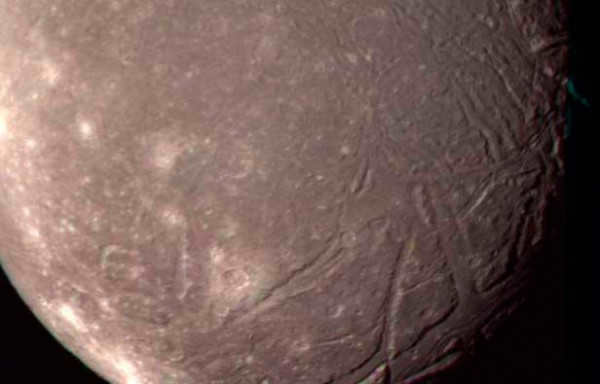
Ariel
Ariel is the most luminous moon of Uranus, primarily because it is covered in a layer of frozen water. It is positioned 191240 km away from Uranus and has a diameter measuring 1158 km. With a density of 1.67 g/cm³, Ariel completes one orbit around Uranus every 2.52 days. The surface of Ariel is characterized by a mottled pattern of canyons that can reach depths of up to 10 km. Additionally, the temperature on Ariel’s surface is a chilling – 215°C.
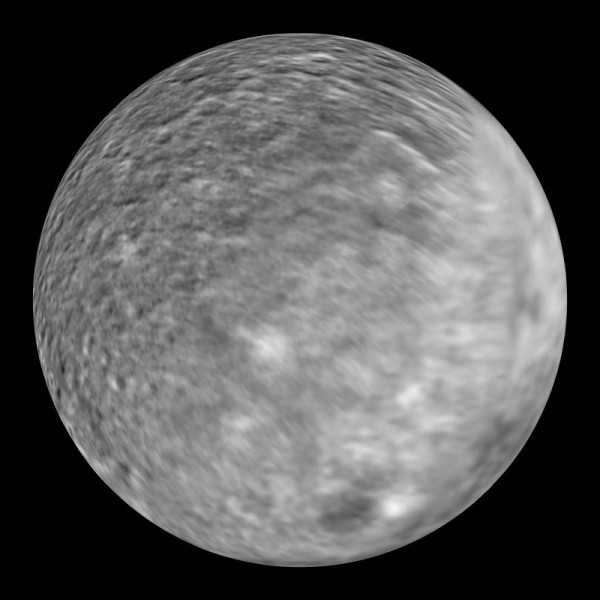

Umbriel
Umbriel is the dimmest moon of Uranus, located 266,000 km away from it. It has a small diameter of only 585 km and takes 4 days to complete one orbit around the planet. The surface of Umbriel is extremely dark, with temperatures dropping as low as -198°C. It has a density of 1.4 g/cm³. The entire surface is covered in numerous craters, and the largest crater, measuring 140 km in diameter, stands out with its distinctive brightness. Scientists believe that this crater contains pure ice, which was exposed when a meteorite struck Umbriel.
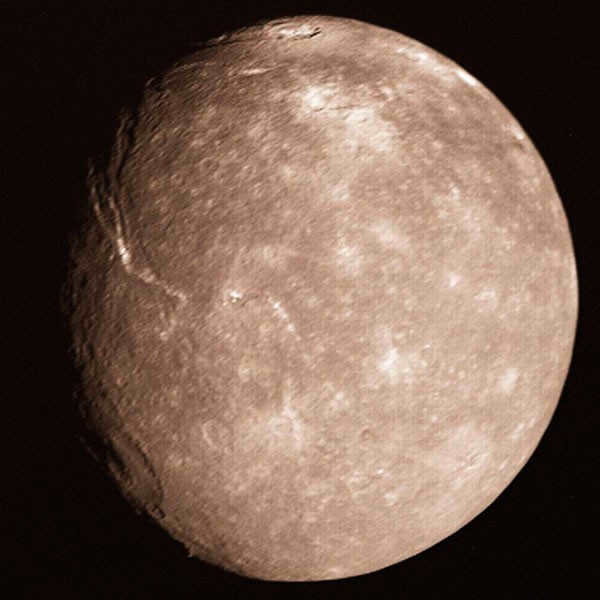
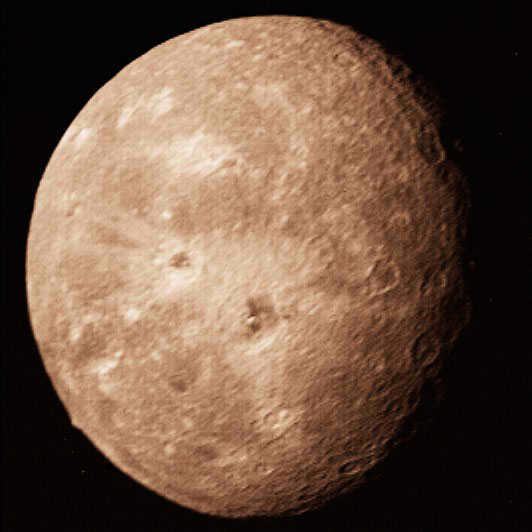
The largest moon of Uranus is called Titania, and it has a diameter of 1,577 km. It is located 436,000 km away from the planet and takes approximately 8.71 days to complete one orbit around it. Titania has a density of 1.71 g/cm³ and a surface temperature of 203°C. Unlike other moons, Titania has a minimal number of craters but is characterized by numerous canyons and valleys, some of which can stretch for distances of up to 1000 km.
Oberon, another moon of Uranus, is smaller than Titania with a diameter of 1526 km and is situated 582,600 km away from the planet. It has a density of 1.63 g/cm³ and a surface temperature of 198°C. The surface of Oberon shows evidence of intense meteorite bombardment, with the largest crater named Hamlet measuring a diameter of 205 km.
Magnetosphere
The magnetic field of Uranus has unique characteristics. One notable peculiarity is the misalignment between the planet’s rotational and magnetic axes, with the shift amounting to one-third of the planet’s radius. Additionally, the magnetic axis is inclined at a 60-degree angle to the rotational axis. The strength of the magnetic field also varies across different regions. Apart from the primary magnetic poles, there are two weaker ones. Unlike other planets, the magnetosphere of Uranus is twisted, instead of extending in a broad band following the solar wind. This twisting is a result of the magnetic axis tilt.
Heat generated internally
When it comes to temperature, Uranus stands out as the chilliest among the gas giants, with a tropopause temperature of -49.2°F. As we descend into the troposphere, the temperature rises to 116.6°F, and the further down we go, the hotter it gets, reaching a staggering 9,032°F. Interestingly, in the stratosphere, the temperature begins to rise again, peaking at 968°F, and it remains high until an altitude of 31,069.04 miles.
Uranus has a remarkably low heat flux. In fact, it emits significantly less heat energy compared to its counterpart, Neptune. Despite being similar in many ways, Neptune radiates 2.6 times more heat energy than it receives from the Sun. Uranus, on the other hand, releases very little. It is possible that a layer within its upper atmosphere acts as a barrier, trapping the planet’s internal heat.
Seasons
The tilt of the giant’s rotation axis is 98 degrees, causing it to be positioned on its side. As a result, the Sun shines on either one of the poles, the equator, or the mid-latitudes at different times.
At the equator, there is a rapid transition between day and night when the Sun is low in the sky. Interestingly, each pole experiences either continuous daylight or darkness for 42 years at a time. Only during the equinoxes, when the Sun is directly over the equator, do the usual changes between day and night occur.
Climate
The climate on Uranus is unique compared to the climates of other gas giant planets. During the Voyager 2 mission, only 10 streaks of clouds were detected in the visible southern hemisphere. Wind speeds at the equator, which are against the planet’s rotation, reach speeds of 50 to 100 m/sec. As you move away from the equator towards latitudes ±20°, the winds calm down and almost reach zero. However, as you continue towards latitudes ±60°, the wind speed gradually increases and becomes more consistent. At the poles, there is minimal to no wind.
Although it is too early to determine seasonal changes on Uranus, it is evident that the structure and thickness of clouds vary significantly during certain periods.
The enigma of Uranus’ lateral rotation. One of the biggest mysteries surrounding the planet is why it is tilted on its side. One theory suggests that during the early stages of the solar system, Uranus experienced a collision with a protoplanet, causing it to shift its orientation and alter its magnetic axis. This collision also resulted in a decrease in the planet’s heat flow.
The enigmatic chevron of Miranda. Another puzzling phenomenon is the chevron-shaped area on the moon Miranda. Upon analyzing satellite images, scientists discovered a region that appears to be relatively untouched by meteorite impacts. This peculiar 140×200 km “tick” is known as the chevron, but its origin remains a mystery.
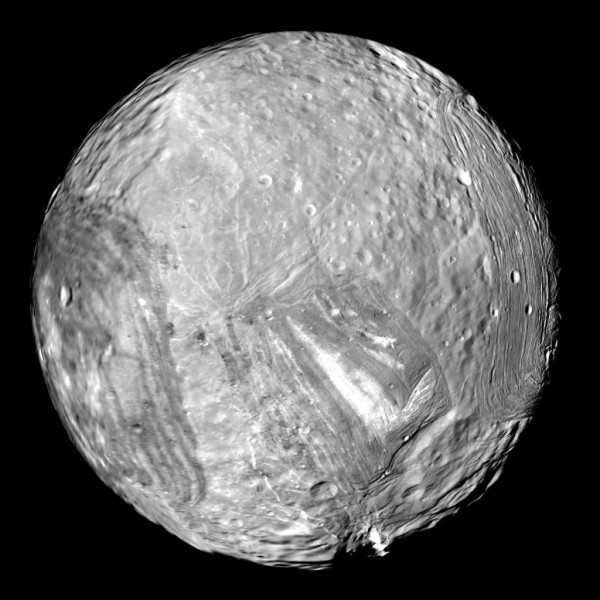
Exploration
Exploration of this colossal celestial body lies ahead. The sole space probe to have ventured into the vicinity of Uranus in 1986 was Voyager 2. It came within 81,500 km of the planet, allowing for the study of its atmosphere and the serendipitous discovery of 10 previously unknown moons. Moreover, this historic encounter enabled the capturing of imagery depicting two additional rings encircling Uranus and the planet’s principal moons.
